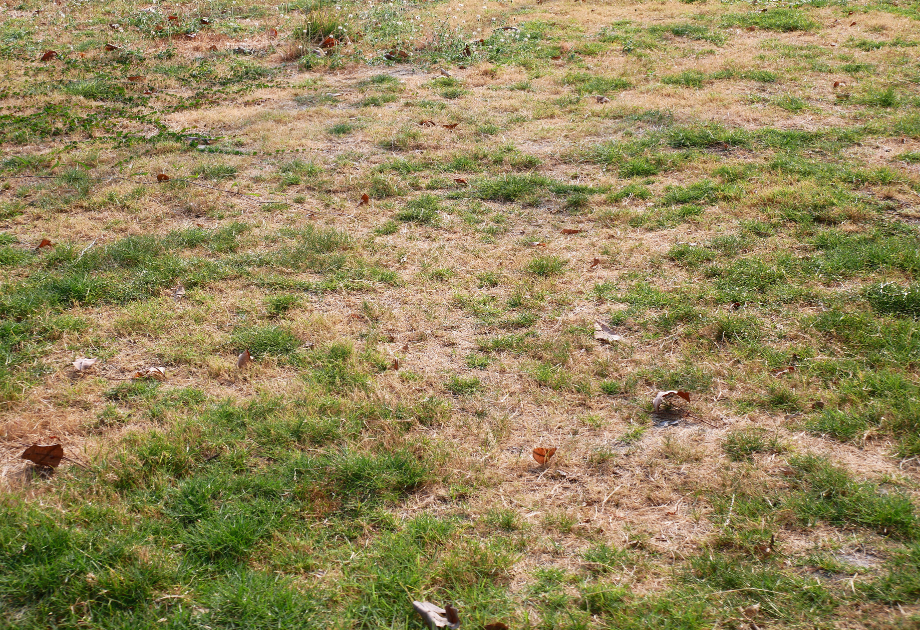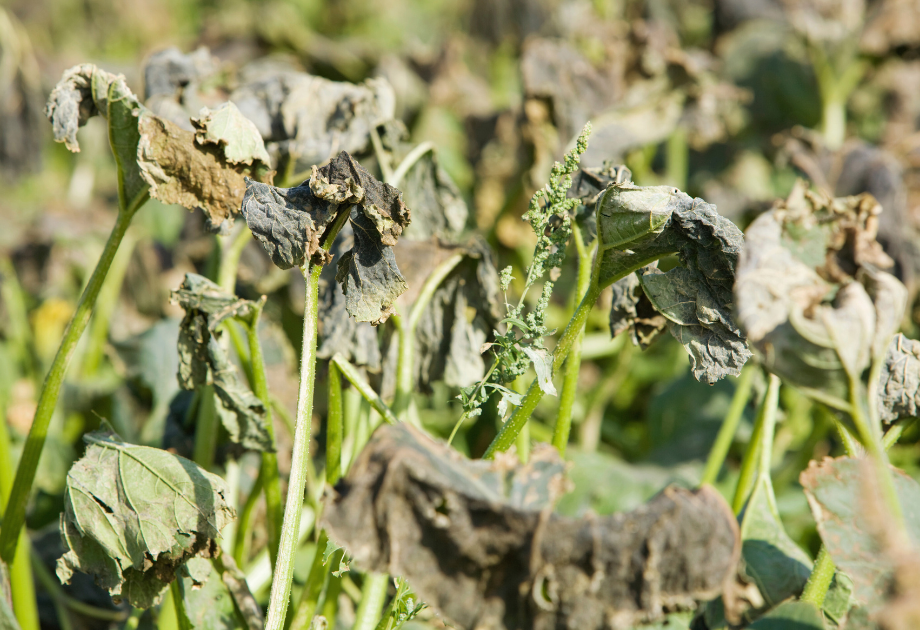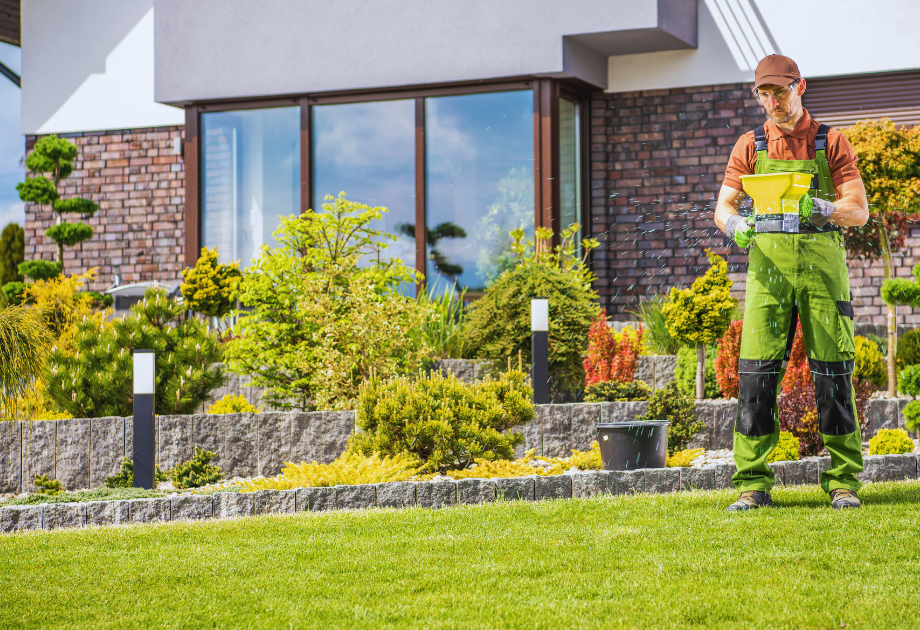Summer Lawn Troubles? How Heat Is Draining Your Yard’s Health
_720.jpg)
Dry spots that spread overnight. Crunchy grass. Plants that droop by lunchtime. If that sounds familiar, your yard might be reacting to the heat.
Summer weather changes how lawns grow and behave. Sunshine and dry soil play a role, but heat also impacts roots, soil moisture, and plant recovery. Even with regular watering and mowing, your yard can still end up looking tired if high temperatures are working against it.
This blog breaks down what to watch for, what’s happening behind the scenes, and how Degree Lawn & Landscape helps homeowners keep things green, healthy, and low-maintenance through the hottest stretch of the season.
Is Your Yard Under Heat Stress?
Even healthy yards can show wear during prolonged heat, and consistent care isn’t always enough to keep plants and turf from falling behind when temperatures climb.
If your yard looks like it’s struggling through the season, here’s what to look for next.

Heat-Stressed Turf
When grass is under heat stress, signs often show up in both color and structure. Common indicators include:
- A duller, gray-green or tan hue, especially in direct sun
- Blades that feel brittle or stay flat after foot traffic
- Slowed growth, even in regularly watered areas
- Dormant spots in compacted soil or high-traffic zones
Cool-season grasses like Kentucky bluegrass and perennial ryegrass react quickly to the heat once the soil warms above 70°F. At that temperature, roots can lose up to half their mass. With less root depth, turf can’t draw in what it needs, even if you’re watering regularly. Lawns that sit in full sun or haven’t been aerated in a while are especially likely to show these signs first.

Heat-Stressed Plants
When plants are under heat stress, you’ll notice visible signs like faded color, limp stems, or slow bud development. Common symptoms include:
- Leaves that curl, dry at the edges, or lose vibrancy
- Stems that droop midday and take longer to bounce back
- Flower buds that stall and never open
- Sudden leaf drop, even on otherwise healthy plants
These signals suggest that the plant is shifting its energy into survival mode. In many cases, it’s a response to root strain, especially in shallow or compacted soil. Once stressed, plants slow their growth and focus on holding onto moisture, often at the expense of blooms or foliage.
What Summer Heat Really Does to Your Yard
It’s easy to spot dry grass or drooping leaves. But what’s happening in the soil is often the real cause of lawn and plant stress during the hottest part of the season. Extended heat changes how moisture moves through your yard. Soil stops absorbing properly, roots lose access to water, and everything from nutrient delivery to oxygen flow starts to lag. This especially affects plants with shallow or confined roots, which may struggle more as the surface temperature rises and the soil loses oxygen.
As the soil warms, root systems tend to contract. This limits how deep turf and plants can pull water from. In many cases, the top layer of soil begins to harden and repel water instead of letting it sink in. This is a common issue in lawns that haven’t been aerated recently.
Soil type plays a big role. Sandy soil drains faster than roots can absorb it. Clay-heavy soil, common in southwestern Ohio, holds moisture near the surface, which can lead to overheating and poor airflow around roots. Both conditions reduce how effectively your yard uses water, even when irrigation is happening regularly.

Why Water Alone Isn’t Always Enough
Watering can be part of the solution, but it won’t work well if the underlying soil conditions aren’t addressed. In high heat, moisture needs to reach deeper into the ground and stay there long enough to be useful. If the water evaporates too quickly or lingers near the surface, plants and turf stay stuck in recovery mode. For plants, that means roots can't access water efficiently if the soil is too dense, too warm, or low on oxygen. Even well-timed watering won’t help much if the structure of the soil prevents deep movement and absorption.
Look for signs like these:
- Water is running off or pooling in areas instead of soaking in
- The ground feels dry just below the surface even after irrigation
- Soft spots, mildew, or mushrooms are showing up in shaded areas
- Brown patches aren’t improving with normal watering
Deep watering that reaches 4-6 inches encourages deeper roots and long-term turf recovery. For areas with heavy clay or foot traffic, aeration opens up the ground so water and air can move freely. An irrigation assessment can pinpoint areas for improvement.

Smart Moves for Supporting Your Yard Through Summer Heat
Midseason heat calls for a shift in routine to help your yard stay healthy. Adjusting your approach to match the way heat affects soil, roots, and turf health makes a noticeable difference.
Raise your mower height during heat waves to keep grass longer and protect fragile root systems. Cutting too short, especially on stressed turf, leads to quick browning and opens the door to weeds and disease.
Fertilizer timing matters too. Avoid applying nitrogen-heavy products during peak heat, unless you’re using a formula designed for heat tolerance. A balanced mix that includes potassium can support plant and turf resilience without pushing growth too hard.
A few inches of organic mulch around plant beds, trees, and new installations helps keep roots cool, reduce surface evaporation, and improve moisture retention.
And if you’re still seeing uneven growth or dry spots no matter what you adjust, soil condition may be the issue. Compact zones benefit from seasonal aeration, which breaks up hardened ground and helps roots stretch deeper into cooler, more stable soil.
Summer-Friendly Services from Degree Lawn & Landscape
You don’t have to guess what your lawn or plants need next. Our services reduce yard stress and simplify maintenance.
We provide:
- Seasonal aeration to improve soil and water movement
- Heat-conscious grass maintenance, including custom mowing strategies
- Fertilization blends designed for heat and drought
- Moisture-saving solutions for beds and delicate areas
Our work is tailored to the conditions we know well, including the clay-heavy soils and unpredictable Midwest weather patterns that stress lawns in late summer.
Create a Resilient Outdoor Space with Degree Lawn & Landscape
Turf, plants, and soil may show stress in different ways. Responding with the right care starts by understanding what your landscape needs during periods of high heat and making changes that offer real support.
At Degree Lawn & Landscape, we build care plans that respond to the specific conditions in your yard. If you're dealing with patchy turf or shallow roots, we help you reset for the season and protect the parts of your landscape that matter most.
Let’s build a summer care plan that works for your lawn. Contact us today to get started. We’re here to help your lawn hold up to the heat and thrive.

